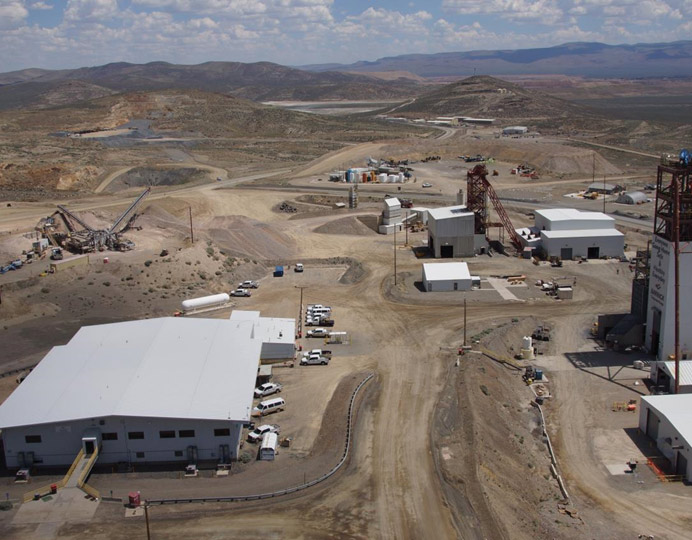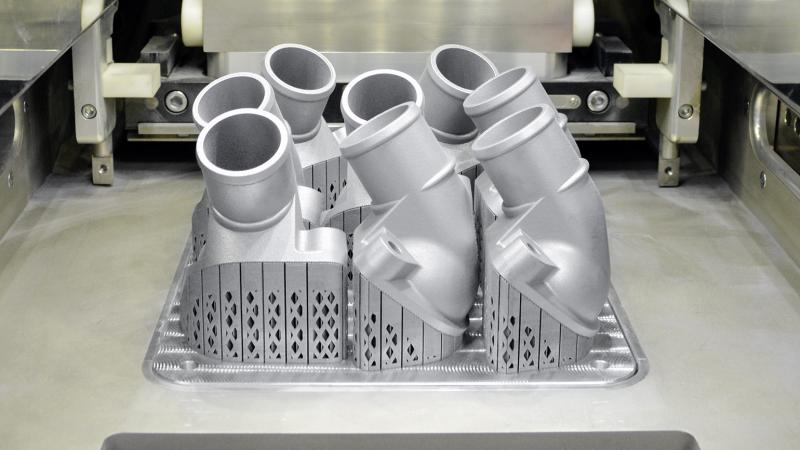![Aerial view of the Turquoise Ridge Mine [ Source ]](https://fabbaloo.com/wp-content/uploads/2020/05/Image1_img_5eb0a57276289.png)
Charles Goulding and Andressa Bonafe of R&D Tax Savers discuss 3D printing in the mining industry.
Barrick Gold Corp. recently announced the acquisition of Randgold, an Africa-focused rival, in a $6 billion deal. The all-share merger strengthens Barrick’s leading position in the gold mining industry, considerably expanding its footprint in Africa. While the resource-rich continent represents an opportunity to revert Barrick’s declining production trends, which fell 25% since 2013, it also entails doing business in high-risk countries, such as the Democratic Republic of Congo.
As Forbes points out, the new Barrick will be the world’s biggest gold producer, with a combined 78 million ounces of proven and probable gold reserves and the ownership of five of the world’s top ten Tier One Gold assets by total cash costs. A Tier One Gold asset is defined as a mine with a stated mine life of over 10 years and a minimum 2017 production of 500,000 ounces of gold with total cash cost within the lower half of the cash cost-curve.
While this recent acquisition may represent significant changes for the mining industry, technological advancements are also major drivers of transformation. Additive manufacturing, in particular, has expanding applications for miners, all of which may be eligible for R&D tax credits.
The Research & Development Tax Credit
Enacted in 1981, the now permanent Federal Research and Development (R&D) Tax Credit allows a credit that typically ranges from 4%-7% of eligible spending for new and improved products and processes. Qualified research must meet the following four criteria:
-
Must be technological in nature
-
Must be a component of the taxpayers business
-
Must represent R&D in the experimental sense and generally includes all such costs related to the development or improvement of a product or process
-
Must eliminate uncertainty through a process of experimentation that considers one or more alternatives
Eligible costs include U.S. employee wages, cost of supplies consumed in the R&D process, cost of pre-production testing, U.S. contract research expenses, and certain costs associated with developing a patent.
On December 18, 2015, President Obama signed the PATH Act, making the R&D Tax Credit permanent. Beginning in 2016, the R&D credit can be used to offset Alternative Minimum tax for companies with revenue below $50MM and for the first time, pre-profitable and pre-revenue startup businesses can obtain up to $250,000 per year in payroll taxes and cash rebates.
3D Models
Within the mining industry, additive manufacturing can be used to create physical models that represent mining operations information, such as topological and geological data, block models, mine designs, tailings and storage designs, and on-site facilities. In addition to providing a more visual and tactile experience than maps and digital representations, 3D models can be can specially tailored for different audiences, such as operating teams, regulatory committees, and members of the community. By communicating more effectively, 3D models allow for more informed and strategic decision making.
Barrick Gold has used 3D printing to build models of its mines. Additive manufacturing is particularly useful in complex locations, such as the Turquoise Ridge mine, in northern Nevada. In operation for over two decades, the mine contains numerous ramps and tunnels, top cuts and undercuts, shafts and zones. It also has areas that are currently being mined adjacent to others that are dormant. This intricate combination of variables is extremely difficult to represent on paper, often amounting to virtually incomprehensible lines, shapes, and markings.
Searching for a more effective way to communicate the mine’s operational issues, engineers at Barrick turned to additive manufacturing. They printed a detailed model that integrated thousands of mine-design parameters. Made of ABS plastic, the model had a very low production cost. Turquoise Ridge was the first Barrick mine to use 3D modeling.
![3D Printed Model of the Turquoise Ridge Mine [ Source ]](https://fabbaloo.com/wp-content/uploads/2020/05/Image2_img_5eb0a57350684.png)
On-Site Production
Mining companies often have operations in remote and high-risk locations, such as many of Randgold’s mines. Supply chains are frequently compromised due to unreliability of access, causing harmful downtime and delays in production due to equipment parts failure. 3D printing can play a strategic role in such locations, particularly for the manufacturing of spare parts for mining machinery. An article in the Mining Magazine points out three ways in which 3D printing will reshape the mining landscape:
I. On-demand and on-site supply chain management that allow for “insourcing” manufacturing strategies for equipment and parts, wherever and whenever needed. Even remote locations can be given access to a digital service parts library to be printed whenever necessary. This strategy could drastically reduce transportation costs, as well as warehousing and inventory needs. In underground operations, this could also allow for a smaller footprint that facilitate operations. The ability to produce on-site is also key to dealing with unpredictable conditions, which are often the case in new operations and in areas of weather volatility. With the expansion of 3D printable materials, it is possible to envision miners becoming self-supplied, meaning they could both source raw material on site and print required products locally.
II. Customization and replicability are important aspects of additive manufacturing that could allow miners to design and produce equipment tailored to the specific needs of each one of their operations. 3D scanning enables fast and cost-effective creation of digital models to be replicated.
III. Material and energy-efficient designs are made possible by additive manufacturing. 3D printing can further optimize the use of material, generating considerably less waste than traditional production techniques. Design experimentation can even lead to smaller, lighter, more functional equipment.
Conclusion
The recently announced merger of Barrick Gold and Randgold represent a significant change in the gold mining industry. 3D printing is also bound to transform this market, allowing for more effective modeling strategies as well as streamlined supply chain operations with the expansion of on-site production capabilities. Considering the metal mining industry as a whole, the supply of metal powder for 3D printing represents a major opportunity, with considerable growth in demand in the near future. According to MINING.com, Swedish equipment and tool manufacturer Sandvik Mining recently invested nearly $25 million in a new titanium and nickel powder plant. The company underlined the expected rise in demand for metal powder for additive manufacturing in coming years.











